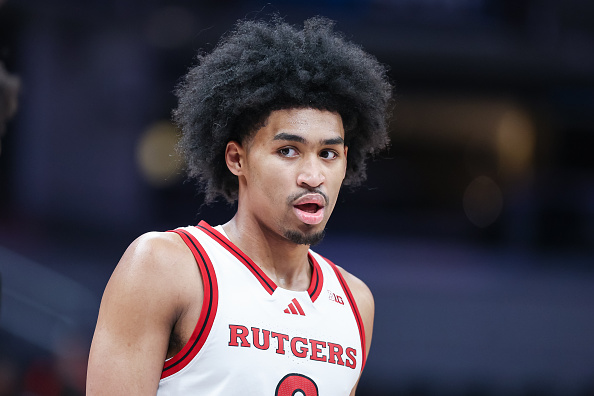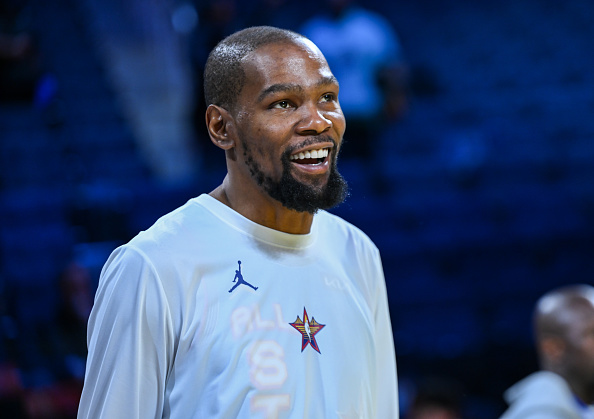Josh Elias | June 29th, 2019
A large topic of debate among NBA fans everywhere in recent years has been the presence of superteams. Do they prevent parity? Are they bad for the league? Are they a new concept? Are they unnatural? Are they even a real thing?
Well, the answers to most of those questions are either completely subjective or something you’d be more likely to hear at Woodstock than in an NBA arena. The only one with any sort of a definitive answer is whether they’re a new concept or not.
And the answer is both yes and no. The term was first used in reference to the NBA in 2001 when the Kobe-and-Shaq Lakers were on their way to the second title of their threepeat and was only popularized once LeBron James, Dwyane Wade, and Chris Bosh teamed up in Miami.
But conceptually, there have been great teams for as long as the NBA’s existed. Teams so great that it didn’t even seem fair.
Life isn’t fair.
The NBA shouldn’t have to be either.
With that in mind, I’m going to take the time to travel through history to find out which teams exactly were superteams, starting with the teams even your grandpa doesn’t remember.
I’ll adjudicate their qualifications as a superteam with three categories.
The three C’s, Composition, Capability, and Consequence.
Composition, for how the team was created and with what expectations.
Capability, for strictly how talented of a team were they compared to their competition.
And consequence, for how well they actually did.
If a team checks all three, they’re a superteam. If they check the first two boxes but not consequence, they’re a failed superteam. If they check the second and third but not composition, they’re a natural superteam. Anything else is not a superteam.
Let’s get things started and talk about the 1947-1954 Minneapolis Lakers.
Superteam by Composition ✗
During the majority of this era, the Lakers were led by four players. A superstar in George Mikan, a secondary star in Vern Mikkelsen, and two tertiary stars, Jim Pollard and Slater Martin.
Pollard was the first to arrive, signing back during the days of the NBL after serving in World War II and playing both basketball and baseball at an amateur level for a few years. He’d been a starter on a national championship team at Stanford, but his time there was long-gone and he was seen as a potential impact player but not game-changing. Probably accurate.
Then came Mikan, who changed everything. He was already a top ten player in the world, at just 23 years old and in his second season, when Minneapolis got him, but they got him completely by chance. The team he was with before, the Chicago American Gears, folded due to financial problems, and their eleven players would each be given to a random NBL team via a lottery system. It was pure luck that Mikan’s name was the one the Lakers pulled out of a hat.
Mikkelsen ended up there through an old process known as a territorial pick. A team could leapfrog the rest of the first round to choose a top prospect if they went to college or high school within 100 miles of the team. Mikkelsen was from Minnesota, so they got to choose him.
Martin’s impact on the team was a surprise. He was the 35th pick in the 1949 BAA draft and averaged just 4.0 points per game in his rookie year.
Even role players like Bob Harrison, Arnie Ferrin, and a young Clyde Lovellette were all Lakers draft selections. Herm Schaefer, who was on the team for the dynasty’s first three years and was a double-digit scorer for two of those years, was the only player who’d had a meaningful stint elsewhere before joining the team (they got him in a player-for-cash deal from the Indianapolis Kautskys) and he’d never been more than a third option on a middling playoff team before then.
Verdict: not guilty. In fact, pretty much as far from guilty as you can get.
Superteam by Capability ✓
Well, Mikan, Mikkelsen, Pollard, and Martin are all in the Hall of Fame now, so there’s that.
Looking at it from a modern perspective, it’s obvious that Mikan was the league’s first superstar and first GOAT, Mikkelsen was a top five player for much of their dynasty, and Pollard (reportedly the first player ever to dunk from the free-throw line) was at least top 20.
Martin was perhaps the best defensive guard in the league, and even Lovellette went on to be a consistent 20-10 threat through most of his prime.
Superteam by Consequence ✓
They were the first great NBA team, and they got trophies to match. In this seven-year stretch, they won an NBL Championship, a BAA Championship, and four of the first five NBA Championships. They only ever fell short in 1950-51, when the Rochester Royals took them out in the Conference Finals.
Rochester was a very capable team, but, more importantly, a very well-rounded team. In addition to one of the only players in the league who could somewhat slow down Mikan in Arnie Risen, their entire starting lineup was composed of scoring threats, and all five averaged double-figures for the series, while Mikan had little support from his teammates that series, particularly Slater Martin.
All in all, they absolutely dominated though, and to call them anything other than a major success would be ridiculous.
So, Are They a Superteam?
Yes, they are a superteam, but they are a natural superteam.
Did it Work?
Unequivocally yes!
The Superteam Series: Minneapolis Lakers 1947-54 | Rochester Royals 1948-55 | New York Knicks 1949-54 | Syracuse Nationals 1949-61 | Philadelphia Warriors 1950-54 | St. Louis Hawks 1956-61 | Boston Celtics 1956-69 | Philadelphia Warriors 1959-64 | Cincinnati Royals 1961-66 | Los Angeles Lakers 1961-68 | St. Louis/Atlanta Hawks 1962-70 & More…
Follow Us on Twitter @thescorecrow
Follow Us on Reddit at u/TheScorecrow
Follow Us on Facebook at The Scorecrow
Follow Us on Instagram at The Scorecrow
Follow Josh Elias on Twitter @thejelias
Main Credit Image: [getty src=”515248364″ width=”594″ height=”472″ tld=”com”]






